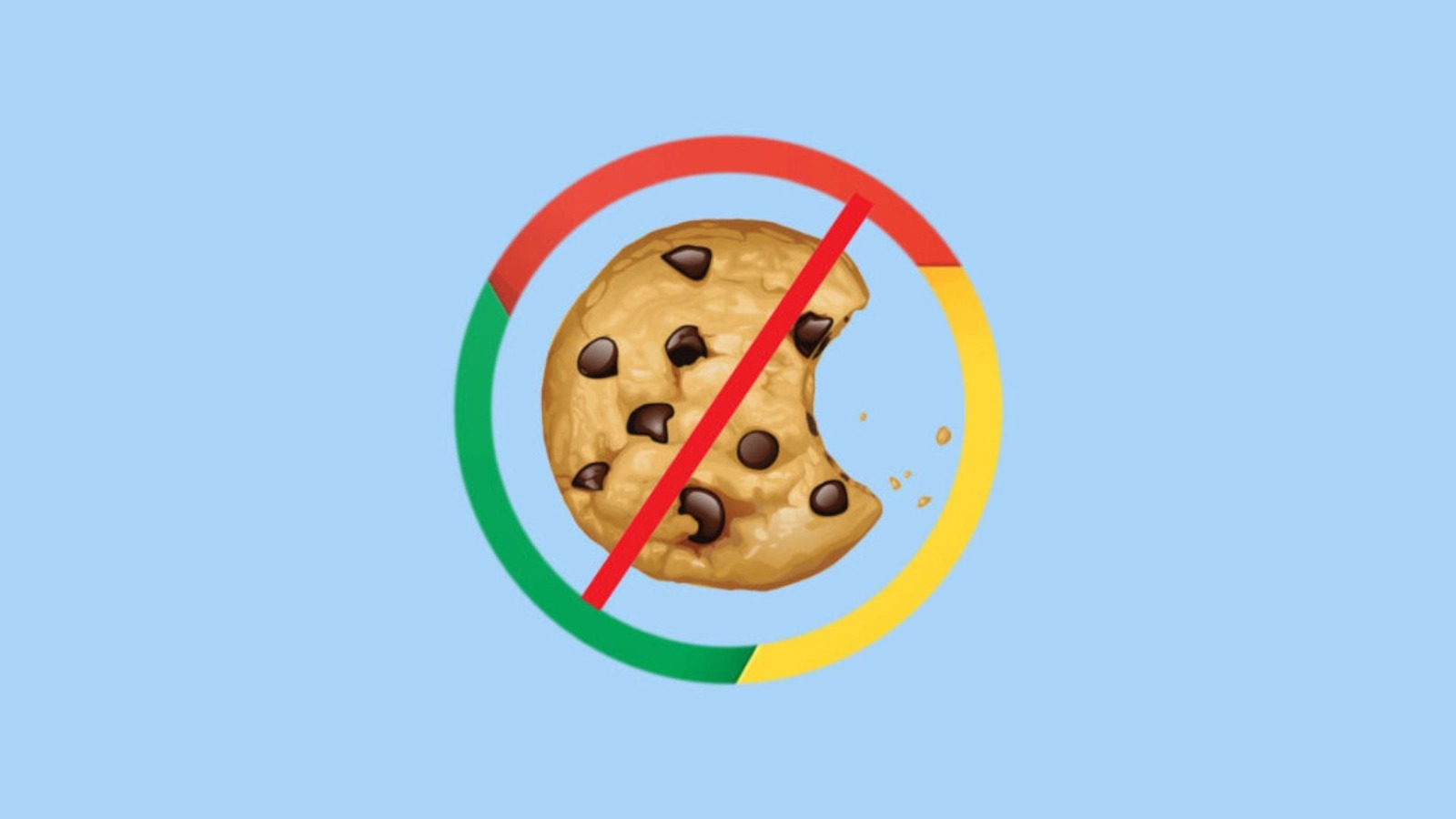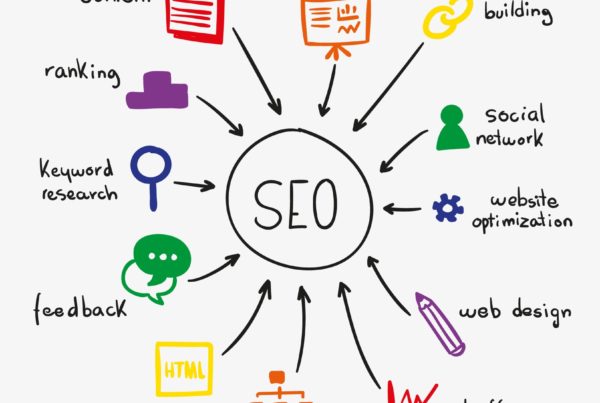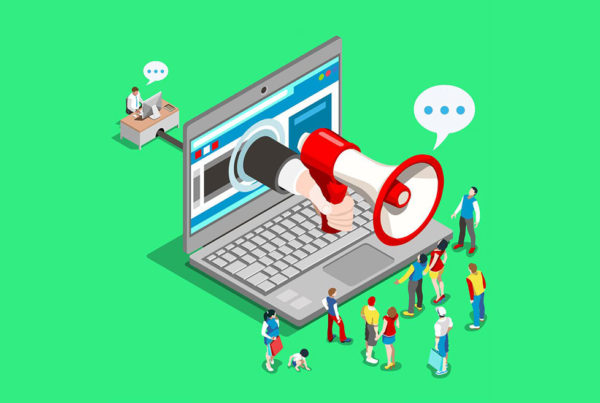The digital marketing landscape is undergoing a major transformation as third-party cookies, which have been the backbone of online advertising for decades, are gradually being phased out by web browsers and regulators. This change has significant implications for marketers, publishers, and consumers, who need to adapt to a new reality of data privacy and consent. In this article, we will explain what cookies are, why they are going away, what a cookieless world means, and how to prepare for it.
What are cookies in Digital Marketing?
Cookies are small pieces of code that are stored in your browser when you visit a website. They allow the website to remember your preferences, such as language, login details, or items in your shopping cart. They also enable the website to track your behavior, such as the pages you visit, the links you click, or the products you buy.
Cookies can be classified into two types: first-party and third-party. First-party cookies are created and used by the website you are visiting. They are essential for providing a good user experience and functionality. Third-party cookies are created and used by other domains than the one you are visiting. They are mainly used for advertising purposes, such as targeting, personalization, measurement, and attribution.
What is the difference between first-party and third-party data?
The difference between first-party and third-party data is how the data is collected and who is collecting it. First-party data is data that you collect directly from your audience via your own channels, such as your website, email, or app. Third-party data is data collected by another entity that is entirely separate from your relationships with your audience, such as a research firm, a data broker, or a government agency.
First-party data is more accurate, relevant, and trustworthy than third-party data, as it reflects the actual behavior and preferences of your audience. However, first-party data has its limitations, such as scale, reach, and diversity. Third-party data can help you to access a larger and more diverse audience across the web, based on their interests, demographics, or behaviors. However, third-party data has its challenges, such as privacy, compliance, and quality.
Zero-party, First-party, and Third-party Cookies:
What is Zero Party Data?
Zero-party data is a type of data that customers intentionally and proactively share with a brand, such as their preferences, interests, needs, and expectations. Unlike other types of data, such as first-party data (data collected directly from customers’ interactions with a brand) or third-party data (data purchased from external sources), zero-party data is not inferred or observed, but explicitly given by customers. This means that zero-party data is more accurate, reliable, and relevant for personalization and marketing purposes.
Zero-party data can help brands build trust and loyalty with their customers, as well as deliver more engaging and relevant experiences across different channels. For example, a brand can use zero-party data to create personalized recommendations, offers, content, or ads that match the customer’s preferences and intentions. A brand can also use zero-party data to segment and target its customers based on their personal context and needs.
To collect zero-party data, brands need to provide value and incentives for customers to share their information willingly. For example, a brand can use quizzes, polls, surveys, games, contests, or rewards to encourage customers to share their feedback, opinions, or preferences. A brand can also use preference centers, where customers can manage their communication and privacy settings, to collect zero-party data. Additionally, a brand needs to ensure that it respects the customer’s privacy and consent when collecting and using zero-party data.
What is the difference between first-party and zero-party data?
The difference between first-party and zero-party data is:
- First-party data is behavioral data that a company collects directly from its customers. It includes demographic information, interests, and location. First-party data is gathered passively via customer interactions, such as browsing, clicking, adding products to a shopping cart, and purchasing.
- Zero-party data is information shared voluntarily by customers. It is also known as explicit data. Typically, zero-party data offers more accurate information than first-party data because the data comes directly from the customer. Zero-party data is collected actively by asking customers to provide their feedback, opinions, or preferences through surveys, polls, questionnaires, or feedback forms.
Both types of data are valuable for personalization and marketing purposes, but they have different advantages and challenges. For example, zero-party data can help build trust and loyalty with customers, as well as deliver more engaging and relevant experiences across different channels. However, zero-party data requires more effort and incentives from both businesses and customers to collect and use. On the other hand, first-party data can help measure campaign effectiveness and optimize conversion rates. However, first-party data may not be enough to understand the customer’s intent and needs, and it may be affected by privacy regulations and cookie restrictions.
What is the difference between first-party and third-party cookies?
The main difference between first-party and third-party cookies is who owns and controls them. First-party cookies are owned and controlled by the website owner, who can decide what data to collect and how to use it. Third-party cookies are owned and controlled by third-party entities, such as ad networks, platforms, or agencies, who can access and share the data across multiple websites and domains.
How long do third-party cookies last?
The lifespan of third-party cookies depends on how they are set by the third-party entity. Some cookies expire after a session, which means they are deleted when you close your browser. Others can last for days, months, or even years, unless you delete them manually or change your browser settings.
What is the importance of first-party and third-party cookies in digital marketing?
First-party and third-party cookies play different roles in digital marketing. First-party cookies help marketers to understand their own website visitors and customers better, and to provide them with relevant content and offers. Third-party cookies help marketers to reach potential customers across the web, based on their interests, demographics, or behaviors.
What is the difference between cookies and cookieless targeting?
Cookie refers to the use of cookies as a method of tracking and identifying users online. Cookieless refers to the absence or limitation of cookies as a method of tracking and identifying users online.
Cookie targeting is when advertisers use cookies to target ads to users based on their profiles, preferences, or behaviors. Cookieless targeting is when advertisers use alternative methods to target ads to users without relying on cookies. These methods can include device fingerprints, IP addresses, contextual signals, or user consent.
Why have third-party cookies outlived their usefulness?
Third-party cookies have outlived their usefulness because they pose several challenges and risks for marketers, publishers, and consumers. Some of these challenges and risks are:
- Privacy concerns: Consumers are becoming more aware and concerned about how their personal data is collected and used by third parties without their knowledge or consent. This has led to increased demand for transparency and control over their online privacy.
- Regulatory compliance: Governments and regulators around the world have introduced stricter laws and regulations to protect consumer data privacy and security. These include the General Data Protection Regulation (GDPR) in Europe, the California Consumer Privacy Act (CCPA) in the US, and the ePrivacy Directive in the EU. These laws require marketers and publishers to obtain user consent before collecting or processing their data through third-party cookies.
- Browser restrictions: Web browsers have started to block or limit third-party cookies by default or by user choice. This has reduced the reach and effectiveness of third-party cookie-based advertising. For example, Safari blocks all third-party cookies by default since 2017; Firefox blocks all third-party tracking cookies by default since 2019; Chrome plans to phase out third-party cookies by 2023.
Why third-party cookies are going away?
Third-party cookies are going away because they are no longer compatible with the evolving expectations and standards of data privacy and consent in the digital world. As consumers demand more control over their online privacy, regulators enforce more stringent data protection laws, and browsers implement more restrictive cookie policies, third-party cookies will become obsolete and ineffective as a method of tracking and targeting users online.
What does a cookieless world mean?
A cookieless world means a world where third-party cookies are no longer available or functional as a method of tracking and targeting users online. In a cookieless world, marketers will have to rely on other methods of identifying and reaching their audiences across the web without compromising their privacy or consent. Some of these methods include:
- First-party data: First-party data is the data that marketers collect directly from their own website visitors and customers, with their permission. First-party data is more accurate, relevant, and trustworthy than third-party data, and can help marketers to create personalized and engaging experiences for their audiences. However, first-party data has its limitations, such as scale, reach, and diversity.
- Contextual targeting: Contextual targeting is when advertisers target ads to users based on the content of the website they are visiting, rather than their personal profiles or behaviors. Contextual targeting uses keywords, topics, categories, or sentiments to match ads with relevant content. Contextual targeting is more privacy-friendly and compliant than cookie-based targeting, as it does not require user consent or identification. However, contextual targeting has its challenges, such as accuracy, granularity, and optimization.
- Universal IDs: Universal IDs are identifiers that are created and shared by multiple parties in the digital advertising ecosystem, such as publishers, platforms, or agencies. Universal IDs aim to replace third-party cookies as a way of identifying and tracking users across the web, while respecting their privacy and consent. Universal IDs are based on hashed email addresses or phone numbers that users provide voluntarily in exchange for access to content or services. Universal IDs can help marketers to improve their targeting, measurement, and attribution capabilities. However, universal IDs have their drawbacks, such as fragmentation, adoption, and governance.
How Does a Cookieless Future Impact My Website?
A cookieless future will impact websites in several ways, depending on how you use cookies and how you adapt to the new reality of data privacy and consent. Some of the possible impacts are:
- Reduced ad revenue: If you rely on third-party cookies to monetize your website through advertising, you may see a decline in your ad revenue as third-party cookies become less available or effective. This is because advertisers will have less data and ability to target and measure their ads on your website. To mitigate this impact, you may need to explore other ways of generating revenue from your website, such as subscriptions, donations, or sponsored content.
- Increased user trust: If you respect your users’ privacy and consent preferences and provide them with clear and transparent information about how you use cookies and data on your website, you may see an increase in your user trust and loyalty. This is because users will appreciate your honesty and integrity and feel more comfortable browsing your website. To enhance this impact, you may need to implement a robust cookie consent management solution that allows you to comply with data privacy laws and regulations and give your users control over their online privacy.
- Improved user experience: If you leverage your first-party data to create personalized and relevant experiences for your users on your website, you may see an improvement in your user experience and satisfaction. This is because users will enjoy your content and offers that match their interests and needs. To optimize this impact, you may need to invest in data analytics and optimization tools that help you to collect, analyze, and act on your first-party data.
How to Prepare for the End of Third-Party Cookies? Step-by-Step Action Plan.
To prepare for the end of third-party cookies and transitioning to a cookieless world, you need to take some steps to adjust your digital marketing strategy and tactics. Here is a possible step-by-step action plan:
- Audit your current use of cookies and data: The first step is to understand how you use cookies on your website and how they affect your marketing performance. You can use tools like CookiePro’s Website Scanning tool to scan your website for cookies and other tracking technologies and generate a detailed report of their sources, purposes, categories, lifespans, and compliance status. Review how you use cookies and data on your website and in your marketing campaigns. Also, identify which cookies and data sources are essential, which ones are non-essential, and which ones will be affected by the cookieless future. You should also assess your compliance with data privacy laws and regulations, such as the GDPR or the CCPA, and ensure that you obtain user consent before collecting or processing their data.
- Review your data privacy compliance: The second step is to review how you comply with data privacy laws and regulations that apply to your website and audience. You can use tools like CookiePro’s Consent Rate Optimization tool to create compliant cookie banners and preference centers that allow you to obtain user consent before collecting or processing their data through cookies or other methods.
- Build your first-party data strategy: The third step is to build a strategy for collecting, storing, managing, and using effectively your own first-party data that you obtain directly from your website visitors and customers, with their permission. You can use tools like Adobe Experience Platform to create unified customer profiles from your first-party data sources and deliver personalized experiences across channels. First-party data is more accurate, relevant, and trustworthy than third-party data, and can help you create personalized and engaging experiences for your audience. However, you should also be mindful of the limitations of first-party data, such as scale, reach, and diversity.
- Explore alternative methods of targeting: The fourth step is to explore alternative methods of targeting your audience across the web without relying on third-party cookies. Some of these methods include device fingerprints, IP addresses, contextual signals, or user consent. For example, you can use contextual targeting to match your ads with relevant content based on keywords, topics, categories, or sentiments. You can also use universal IDs to identify and track users across the web based on hashed email addresses or phone numbers that users provide voluntarily in exchange for access to content or services. You can also use tools like IBM Watson Advertising to leverage AI-powered contextual targeting that matches your ads with relevant content based on keywords, topics, categories, or sentiments.
- Collaborate with trusted partners: The fifth step is to collaborate with trusted partners in the digital advertising ecosystem who share your values and goals of respecting user privacy and consent. You can work with publishers, platforms, or agencies who offer solutions that enable you to reach and engage your audience in a cookieless future. For example, you can work with publishers who offer premium inventory or native advertising opportunities. You can also work with platforms or agencies who offer data-driven insights or optimization tools.
- Monitor and optimize your performance: You should monitor and optimize your performance and results in a cookieless future. You should track and analyze your metrics, such as impressions, clicks, conversions, cost, and ROI. You should also test and experiment with different strategies and tactics to find what works best for your audience and goals.
A cookieless future may seem daunting for marketers who have relied on third-party cookies for a long time. However, it is also an opportunity to innovate and improve your marketing practices in a way that respects user privacy and consent. By planning ahead and taking action now, you can prepare for a cookieless future and thrive in it.
How to Plan for a Cookieless Future Despite Delays?
A cookieless future is a scenario where third-party cookies, which are used to track and target users online, are no longer supported by web browsers. This will have a significant impact on digital marketing, as many of the current methods of advertising, measurement, and attribution rely on third-party cookies.
Google, the owner of the most popular web browser Chrome, announced in January 2020 that it plans to phase out third-party cookies by 2022. However, in June 2021, Google delayed this plan until late 2023, citing the need for more time to test and implement alternative solutions with the industry.
Despite this delay, marketers should not be complacent and wait for the last minute to prepare for a cookieless future. Instead, they should use this extra time to proactively adapt their strategies and tactics to the new reality of data privacy and consent.
What are some cookieless marketing strategies along with examples?
Cookieless marketing strategies are marketing strategies that do not rely on third-party cookies to track and target users online. Cookieless marketing strategies aim to respect user privacy and consent while delivering relevant and effective marketing messages. Some examples of cookieless marketing strategies are:
- First-party data marketing: First-party data marketing is when marketers use their own data that they collect directly from their website visitors and customers, with their permission, to create personalized and engaging experiences across channels. First-party data marketing can help marketers to improve their customer loyalty, retention, and lifetime value. For example, Netflix uses its first-party data to recommend movies and shows based on the user’s viewing history and preferences.
- Contextual marketing: Contextual marketing is when marketers use the content of the website that the user is visiting, rather than their personal profile or behavior, to deliver relevant and appropriate ads. Contextual marketing can help marketers to reach new and diverse audiences, increase brand awareness, and enhance user experience. For example, Amazon uses contextual marketing to show ads for products related to the user’s search query or browsing history.
- Consent-based marketing: Consent-based marketing is when marketers obtain user consent before collecting or processing their data for marketing purposes. Consent-based marketing can help marketers to build trust and transparency with their users, comply with data privacy laws and regulations, and avoid potential fines or penalties. For example, Spotify uses consent-based marketing to ask users to opt-in to receive personalized ads based on their music preferences and listening habits.
Recommended Data Strategies to prepare for the impact of Cookieless world.
To prepare for the impact of a cookieless world, marketers need to adopt some data strategies that can help them to collect, store, manage, and use their data effectively and ethically. Some of these data strategies are:
- Data audit: A data audit is a process of reviewing and analyzing the current state of your data sources, quality, usage, and compliance. A data audit can help you to identify your data gaps, strengths, weaknesses, opportunities, and threats.
- Data governance: Data governance is a set of policies, processes, roles, and responsibilities that define how your data is collected, stored, managed, and used. Data governance can help you to ensure your data is accurate, consistent, secure, and compliant with data privacy laws and regulations.
- Data integration: Data integration is a process of combining data from different sources into a unified view. Data integration can help you to create a holistic and comprehensive picture of your customers and their journeys across channels.
- Data analytics: Data analytics is a process of applying statistical techniques and tools to analyze your data and generate insights. Data analytics can help you to understand your customers’ needs, preferences, behaviors, and feedback.
- Data activation: Data activation is a process of using your data insights to inform your marketing decisions and actions. Data activation can help you to create personalized and relevant experiences for your customers across channels.
What is Contextual Targeting?
Contextual targeting is a method of targeting ads to users based on the content of the website they are visiting, rather than their personal profile or behavior. Contextual targeting uses keywords, topics, categories, or sentiments to match ads with relevant content.
Why is contextual targeting important in cookieless future?
Contextual advertising is a type of advertising that uses contextual targeting to deliver ads to users based on the content they are viewing. Contextual targeting is important in a cookieless future because it offers several benefits for marketers, publishers, and consumers. Some of these benefits are:
- Privacy-friendly: Contextual targeting does not require user consent or identification, as it does not collect or process any personal or behavioral data from users. Contextual targeting respects user privacy and consent preferences and complies with data privacy laws and regulations.
- Scalable: Contextual targeting can reach a large and diverse audience across the web without relying on third-party cookies or identifiers. Contextual targeting can also leverage the growing amount of content available online in various formats and languages.
- Effective: Contextual targeting can deliver relevant and appropriate ads that match the user’s intent and interest at the moment of consumption. Contextual targeting can also enhance the user’s experience by providing useful information or solutions related to the content they are viewing.
- Increased brand awareness: Contextual advertising can increase brand awareness by exposing the brand to new and diverse audiences who are interested in the content they are viewing.
- Improved brand perception: Contextual advertising can improve brand perception by associating the brand with high-quality and relevant content that matches the user’s interest and mood.
- Enhanced ad performance: Contextual advertising can enhance ad performance by delivering ads that are more likely to capture the user’s attention and engagement.
Contextual targeting can provide a win-win situation for marketers, publishers, and consumers in a cookieless world. Marketers can reach their target audience across the web without compromising their privacy or consent; publishers can monetize their content without relying on third-party cookies or identifiers; consumers can enjoy relevant and useful ads without sharing their personal or behavioral data.
How do you use contextual targeting?
To use contextual targeting effectively, you need to follow some best practices, such as:
- Define your campaign goals: Before you start your contextual targeting campaign, you need to define your campaign goals and objectives, such as who you want to reach, what you want to achieve, and how you want to measure your success.
- Choose your keywords, topics, categories, or sentiments: Depending on your campaign goals and objectives, you need to choose the keywords, topics, categories, or sentiments that best describe the content you want to target or avoid. You can use tools like Google Ads Keyword Planner or Bing Ads Keyword Research Tool to find relevant and popular keywords for your campaign.
- Select your ad format and creative: Depending on your campaign goals and objectives, you need to select the ad format and creative that best suit your message and audience. You can use tools like Google Ads Display Ad Builder or Bing Ads Ad Preview Tool to create and preview your ads for different devices and placements.
- Monitor and optimize your campaign: Once you launch your contextual targeting campaign, you need to monitor and optimize your campaign performance and results. You can use tools like Google Ads Performance Dashboard or Bing Ads Performance Report to track and analyze your campaign metrics, such as impressions, clicks, conversions, cost, and ROI. You can also use tools like Google Ads Optimization Score or Bing Ads Optimization Opportunities to find and apply recommendations to improve your campaign efficiency and effectiveness.
Contextual targeting vs. Behavioral Targeting – their Pros and Cons.
Contextual targeting and behavioral targeting are two different methods of targeting ads to users online. Contextual targeting is based on the content of the website the user is visiting; behavioral targeting is based on the user’s profile or behavior across the web. Both methods have their pros and cons, as shown in the table below:
| Method | Pros | Cons |
| Contextual targeting | – Privacy-friendly: does not require user consent or identification | – Less personalized: does not account for user’s individual preferences or behaviors |
| – Scalable: can reach a large and diverse audience across the web | – Less accurate: may not match the user’s intent or interest at the time of viewing | |
| – Effective: can deliver relevant and appropriate ads that match the user’s interest and mood | – Less granular: may not capture the user’s nuances or subtleties in their content consumption | |
| Behavioral targeting | – Personalized: can account for user’s individual preferences or behaviors | – Privacy-invasive: requires user consent or identification |
| – Accurate: can match the user’s intent or interest at the time of viewing | – Limited: can reach a smaller and less diverse audience across the web | |
| – Granular: can capture the user’s nuances or subtleties in their content consumption | – Ineffective: may deliver irrelevant or inappropriate ads that annoy or offend the user |
What are some examples of successfully implemented cookieless marketing strategies?
Cookieless marketing is a way of reaching and engaging with customers online without relying on third-party cookies, which are small pieces of data that track users’ behavior across different websites. Third-party cookies are being phased out by major browsers and tech companies due to privacy concerns, which means that marketers need to find alternative ways to collect and use data for personalization and measurement.
Some brands that have implemented cookieless marketing strategies are:
- VMware: VMware is a global technology company that provides cloud computing and virtualization software and services. VMware has been using first-party data, which is data collected directly from its own website and customers, to create personalized experiences and measure campaign effectiveness. VMware has also been investing in data platforms and tools that enable it to unify, analyze, and activate its first-party data across different channels.
- Lush: Lush is a cosmetics retailer that sells handmade products made from natural ingredients. Lush has been using zero-party data, which is data that customers willingly share with a brand in exchange for value or benefits, to create personalized recommendations and offers. Lush has also been using contextual advertising, which is advertising that matches the content of the website or app where it appears, to reach relevant audiences without using cookies.
- The New York Times: The New York Times is a newspaper and media company that covers news, politics, culture, and more. The New York Times has been using its own first-party data, as well as second-party data, which is data shared between trusted partners, to create targeted advertising solutions for its advertisers. The New York Times has also been using its own proprietary technology, called TAFI (The Times Audience Finder Initiative), to segment and target its readers based on their interests, behaviors, and preferences.
- Amazon: Amazon is an e-commerce giant that sells a variety of products and services online. Amazon has been using its own first-party data, which is data collected from its own website, app, and devices, to create personalized recommendations and offers for its customers. Amazon has also been using its own identity solution, called Amazon Advertising ID (AAID), which is a unique identifier that allows advertisers to target and measure ads on Amazon’s properties and third-party websites and apps that use Amazon’s services.
- Netflix: Netflix is a streaming service that offers a wide range of movies, TV shows, documentaries, and more. Netflix has been using its own first-party data, which is data collected from its own platform and subscribers, to create personalized content and experiences for its viewers. Netflix has also been using contextual advertising, which is advertising that matches the content of the website or app where it appears, to reach relevant audiences without using cookies.
- Spotify: Spotify is a music streaming service that offers millions of songs, podcasts, playlists, and more. Spotify has been using its own first-party data, which is data collected from its own app and users, to create personalized recommendations and offers for its listeners. Spotify has also been using zero-party data, which is data that users willingly share with a brand in exchange for value or benefits, to create loyalty programs and rewards for its premium subscribers.
Conclusion
In conclusion, a cookieless world is a world where third-party cookies will no longer be available or functional as a method of tracking and targeting users online. This change has significant implications for marketers, publishers, and consumers, who need to adapt to a new reality of data privacy and consent. To prepare for a cookieless future, marketers need to adopt some strategies and tactics that can help them to collect, store, manage, and use their data effectively and ethically.
Example source: hyperlinked for details.
Images source: Google images.









